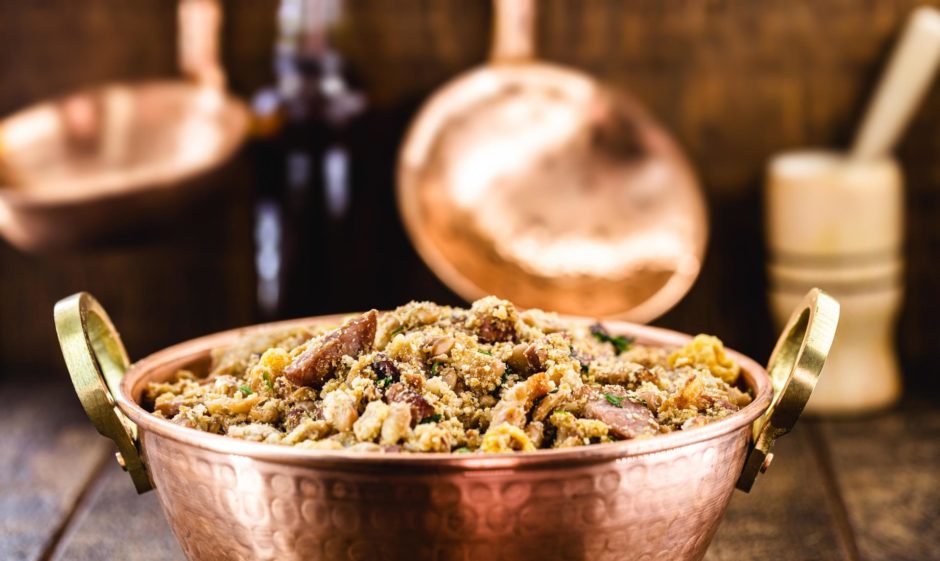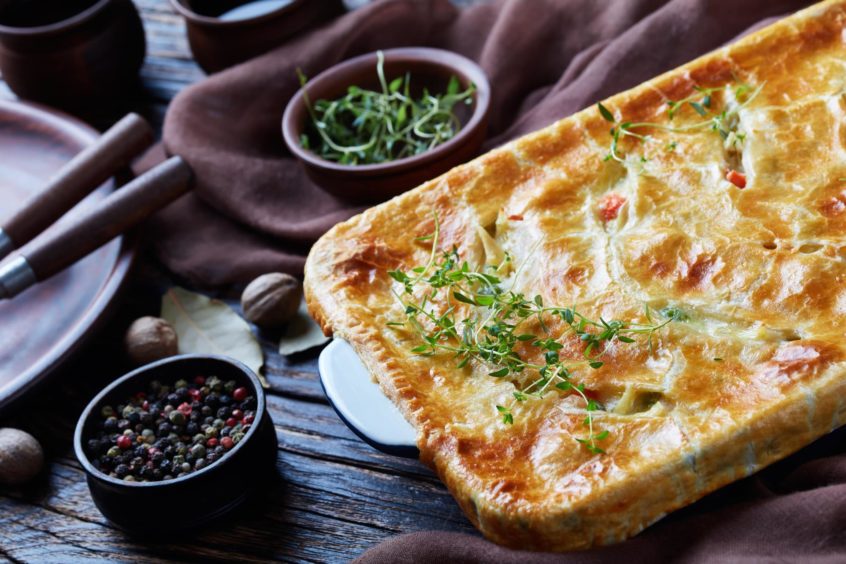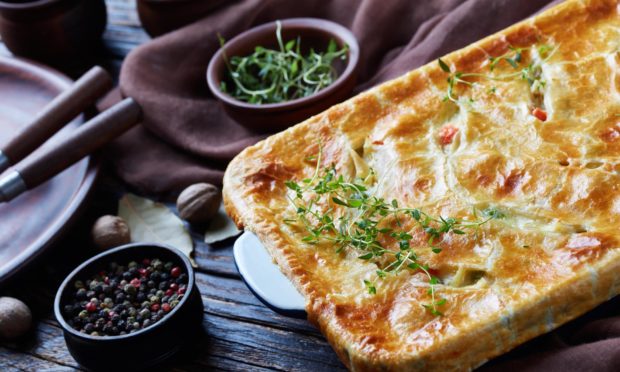Whether you eat meat or you don’t, there’s a pie for you. Aunt Kate is back with a recipe for sausage and bean pie and another for vegetable fans.
British Pie Week ends on Sunday (March 7), so if you haven’t had the chance to make or enjoy one yet, then Aunt Kate’s variations below from the early 1900s may take your fancy.
Aunt Kate was the “original domestic goddess” who wrote recipes for the People’s Journal and the People’s Friend from the 1880s to the 1960s. Within that time she wrote many recipe books, including her 1910 Cookery Book, from which these recipes are from.
We’ve tried, as best we can, to convert the measurements and temperatures into what we would use today, though some may differ.
When it comes to pies, if you fancy making your own but you’re not quite sure about how to make the pastry from scratch, take a look at one of Aunt Kate’s previously-featured recipes for pastry here.
For more inspiration, take a look at the rest of the series here.
Sausage pie
(Serves 4-6)

Ingredients
- 1 lb (approx 450g) sausages, cut into 4-inch lengths
- Cooked haricot beans (enough to form a layer in a pie dish)
- Sliced tomatoes (enough to form a layer in a pie dish)
- 1 teacupful (approx 115g) breadcrumbs
- Salt
- Pepper
- Butter
Method
- Into a deep pie dish, place a layer of sausages.
- Follow this with a layer of cooked haricot beans and then a layer of sliced tomatoes.
- Cover with a layer of breadcrumbs, salt and pepper, and dot with lumps of butter.
- Bake in the oven for one hour at 150-160ºC.
Savoury vegetable pie
(Serves 4-6)

Ingredients
- 1 onion, finely diced
- 2 carrots, finely chopped
- 1 or 2 turnips, finely chopped
- A stick of celery, finely chopped
- Handful of peas
- 1 beef tomato, skinned and chopped
- 1 hard-boiled egg, sliced
- 1 tbsp ketchup
- 1 teacupful (approx 135ml) water or stock
- Pre-made short crust pastry
Method
- Clean, peel and cut into small pieces a good-sized onion, some carrots, turnip, a stick of celery and a handful of peas.
- Cook the veg in a little water until soft.
- Drain and place them in a pie dish.
- Next, skin and cut up a tomato and add, a hard-boiled egg in slices and add to the pie dish.
- Season to taste. Then add the ketchup and water or stock.
- Cover with the short crust pastry and bake in a good oven (approx 200ºC) for 30 minutes.
More in this series…
Aunt Kate’s Kitchen: Learn how to make simple pastry with these recipes from the 1930s
Aunt Kate’s Kitchen: Go bananas for these baking recipes from the 1930s
